Henry Fuchs
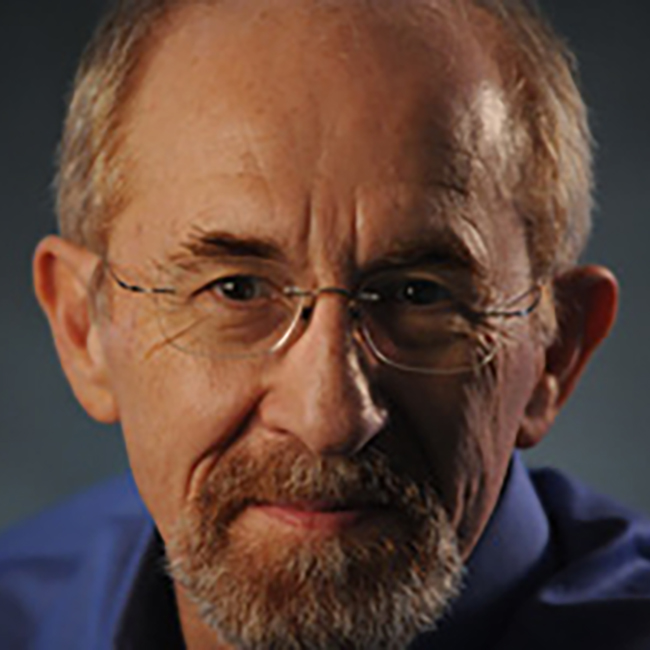
Most Recent Affiliation(s):
- University of North Carolina at Chapel Hill, Computer Science, Federico Gill Distinguished Professor
Location:
- Chapel Hill, North Carolina, United States of America
Bio:
SIGGRAPH 2014
Henry Fuchs is the Federico Gil Distinguished Professor of Computer Science and Adjunct Professor of Biomedical Engineering at UNC Chapel Hill. He has been active in computer graphics since the early 1970s, with rendering algorithms (BSP Trees), hardware (Pixel-Planes and PixelFlow), virtual environments, tele-immersion systems and medical applications. He received a Ph.D. in 1975 from the University of Utah. From 1975 to 1978 he was an assistant professor at the University of Texas at Dallas. Since 1978, he’s been on the faculty at UNC Chapel Hill. He is a member of the National Academy of Engineering, a fellow of the American Academy of Arts and Sciences, the recipient of the 1992 ACM-SIGGRAPH Achievement Award, the 1992 Academic Award of the National Computer Graphics Association, the 1997 Satava Award of the Medicine Meets Virtual Reality Conference, and the 2013 IEEE-VGTC Virtual Reality Career Award.
SIGGRAPH 1997
Henry Fuchs is Federico Gil Professor of Computer Science and Adjunct Professor of Radiation Oncology at the University of North Carolina at Chapel Hill. He received a PhD in Computer Science from the University of Utah in 1975. He has been involved in three-dimensional biomedical imaging and graphics since 1969 and in work related to head mounted displays since 1970. At present, he is predominantly involved in the field of virtual reality in medicine through his work on the Medical Imaging Program Project and his research in head-mounted displays. Prof Fuchs is one of the inventors of the Pixel-Planes high-performance graphics engine, currently the world’s fastest graphics computer, and is a principal investigator for the work on its successor, Pixel Flow. He has over ninety publications resulting from his research in computer graphics, particularly interactive, three-dimensional computer graphics. He received the 1992 Computer Graphics Achievement Award from ACM/SIGGRAPH, the 1992 National Computer Graphics Association Academic Award, and, most recently, the 1997 Satava Award for “unique vision and commitment to the transformation of medicine through communication”. He was elected to the National Academy of Engineering in 1997. He has been a member of the National Research Council Computer Science and Telecommunications Board since 1993. He was an associate editor of ACM Transactions on Graphics (1983 1988) and the guest editor of its first issue (Jan 1982). He was the technical program chair for ACM Siggraph 81 Conference, chairman of the 1985 Chapel Hill Conference on Advanced Research in VLSI, chairman of the 1986 Chapel Hill Workshop on Interactive 3D Graphics, co-director of the NATO Advanced Research Workshop on 3D Imaging in Medicine (1990), and co-chair of the National Science Foundation Workshop on Research Directions in Virtual Environments (1992). He has served on industrial advisory boards for many years.
SIGGRAPH 1995
Henry Fuchs has been involved in three-dimensional biomedical imaging and graphics since 1969 and in work related to head-mounted displays since 1970. He has become increasingly involved in the intervening years in the field of virtual reality in medicine through his work on the Mechanical Imaging Program Project and his research in head- mounted displays. Prof. Fuchs is one of the inventors of the Pixel-Planes high- performance graphics engine, currently the world’s fastest graphics computer, and is a principal investigator for the work on its successor, PixelFlow. He has over eighty publications resulting from his research in computer graphics, particularly interactive, three-dimensional computer graphics. He is Federico Gil Professor of Computer Science and Adjunct Professor of Radiation Oncology at the University of North Carolina at Chapel Hill. He received a Ph.D. in Computer Science from the University of Utah in 1975. He received the 1992 Computer Graphics Achievement Award from ACM/SIGGRAPH and the 1992 National Computer Graphics Association Academic Award. He has been a member of the National Research Council Computer Science and Telecommunications Board since 1993. He is on the editorial board of the newly formed IEEE journal, Transactions on Visualization and Computer Graphics, and the Virtual Reality Society Journal. He was an associate editor of ACM Transactions on Graphics (1983-1988) and the guest editor of Its first ISsue (Jan 1982). He was the technical program chair for ACM Siggraph’81 Conference, chairman of the 1985 Chapel Hill Conference on Advanced Research in VLSI, chairman of the 1986 Chapel Hill Workshop on Interactive 3D Graphics, co-director of the NATO Advanced Research Workshop on 3D Imaging in Medicine (1990), and co-chair of the National Science Foundation Workshop on Research Directions in Virtual Environments (1992). He has served on industrial advisory boards for many years, including most recently the Fraunhofer Computer Graphics Research Group, the U.S. branch of the Fraunhofer Institute, based in Germany, perhaps the world’s largest computer graphics research institution.
SIGGRAPH 1994
Henry Fuchs is Federico Gil professor of computer science and adjunct professor of radiation oncology at the University of North Carolina at Chapel Hill. He received a BA in Information and Computer Science from the University of Santa Cruz in 1970 and a Ph.D. in Computer Science from the University of Utah in 1975. He has been an associate Editor of ACM Transactions on Graphics (1983-1988) and the guest editor of its first issue (Jan. 1982). He was the chairman of the first of the Symposia on Interactive 3D Graphics (1986), co-director of the NATO Advanced Resean:h Workshop on 3D Imaging in Medicine (1990), and co-chair of the National Science Foundation Workshop on the Future of Virtual Environments Research (1992). He received the 1992 Computer Graphics Achievement Award from ACM/SIGGRAPH and the National Computer Graphics Association Academic Award (1992). His current research interests include the application of bead-mounted display technologies to problems in medicine.
SIGGRAPH 1993
Henry Fuchs is Federico Gil professor of computer science and adjunct professor of radiation oncology at the University of North Carolina at Chapel Hill. He received a BA in information and Computer Science from the University of California at Santa Cruz in 1970 and a pd in computer science from the University of Utah in 1975. He has been an associate editor of ACM Transactions on Graphics (1983 1988) and the guest editor of its first issue (Jan 1982). He was the chairman of the first of the Symposia on Interactive 3D Graphics (1986) co-director of the NATO Advanced Research Workshop on 3D imaging in Medicine (1990) and co-chair of the National Science Foundation Workshop on the Future of Virtual Environments Research (1992). He received the 1992 Computer Graphics Achievement Award from ACM/SIGGRAPH and the National Computer Graphics Association Academic Award (1992). His current research interests include the application of head-mounted display technologies to problems in medicine.
SIGGRAPH 1984
Henry Fuchs is a professor in the Department of Computer Science at the University of North Carolina at Chapel Hill. He received a Ph.D. in computer science from the University of Utah. He is working on improved processors and sensors for interactive 3-D graphics. Fuchs is serving as associate editor of the ACM Transactions on Graphics.
Course Organizer:
- SIGGRAPH 1985, "VLSI for Computer Graphics"
- SIGGRAPH 1993, "Three dimensional Visualization Using Medical Data"
- SIGGRAPH 1994, "Programming Virtual Worlds"
- SIGGRAPH 1996, "Introduction to Virtual Reality"
- SIGGRAPH 1984, "VLSI and Computer Graphics"
Learning Category: Organizing Committee Member:
Learning Category: Jury Member:
Award(s):
- SIGGRAPH 2015 Steven Anson Coons Award: Fuchs
- SIGGRAPH 1992 Computer Graphics Achievement Award: Fuchs
Experience(s):

Type: [History]
Cabinets of Computer Graphics Curiosities
[Kasik] [Bolas] [Cychosz] [Debevec] [Dow] [Eber] [England] [Feiner] [Fisher] [Fuchs] [Jones] [Karakusevic] [Kramer] [Nelson] [Peddie] [Troy] [Whitton]
[SIGGRAPH 2023]
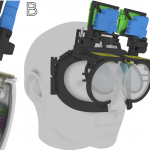
Type: [E-Tech]
Steerable Application-Adaptive Near-Eye Displays
Organizer(s): [Rathinavel] [Chakravarthula] [Akşit] [Spjut] [Boudaoud] [Whitted] [Luebke] [Fuchs]
Entry No.: [18]
[SIGGRAPH 2018]
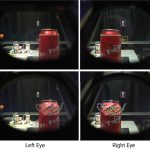
Type: [E-Tech]
Membrane AR: Varifocal, Wide-Field-of-View Augmented Reality Display from Deformable Membranes
Organizer(s): [Dunn] [Tippets] [Torell] [Kellnhofer] [Akşit] [Didyk] [Myszkowski] [Luebke] [Fuchs]
Entry No.: [15]
[SIGGRAPH 2017]
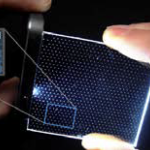
Type: [E-Tech]
Pinlight Displays: Wide Field of View Augmented Reality Eyeglasses using Defocused Point Light Sources
Organizer(s): [Maimone] [Lanman] [Rathinavel] [Keller] [Luebke] [Fuchs]
Entry No.: [20]
[SIGGRAPH 2014]
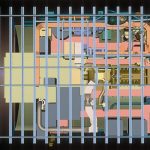
Type: [E-Tech]
Advanced Technologies for Virtual Environments
Organizer(s): [Whitton] [Bishop] [Brooks] [England] [Fuchs] [Lastra] [Manoch] [Poulton] [Taylor]
Entry No.: [27]
[SIGGRAPH 1997]
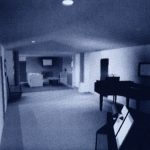
Type: [VR Experiences]
An Interactive Building Walkthrough System
Organizer(s): Developer(s): [Brooks] [Fuchs]
[SIGGRAPH 1991]
Experience Category Collaboration(s):

Type: [VR Experiences]
3dm, A 3-Dimensional Modeling System
Organizer(s): Developer(s): [Butterworth] [Davidson] [Hench] [Olano]
[SIGGRAPH 1991]

Type: [VR Experiences]
Flying Through Protein Molecules
Organizer(s): Developer(s): [Holloway] [Robinett]
[SIGGRAPH 1991]
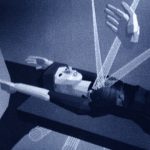
Type: [VR Experiences]
Radiation Therapy Treatment Planning with a Head-Mounted Display
Organizer(s): Developer(s): [Balu] [Chung] [Crittenden] [Yoo]
[SIGGRAPH 1991]
Learning Category: Presentation(s):
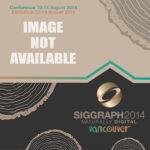
Type: [Technical Papers]
Focus 3D: Compressive Accommodation Display Presenter(s): [Maimone] [Wetzstein] [Hirsch] [Lanman] [Raskar] [Fuchs]
[SIGGRAPH 2014]
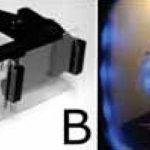
Type: [Technical Papers]
Pinlight displays: wide field of view augmented reality eyeglasses using defocused point light sources Presenter(s): [Maimone] [Lanman] [Rathinavel] [Keller] [Luebke] [Fuchs]
[SIGGRAPH 2014]

Type: [Courses]
Put on Your 3D Glasses Now: The Past, Present, and Future of Virtual and Augmented Reality Organizer(s): [Lanman]
Presenter(s): [Lanman] [Fuchs] [Mine] [McDowall] [Abrash]
Entry No.: [12]
[SIGGRAPH 2014]

Type: [Panels]
The Future is Here: Augmented and Virtual Reality Presenter(s): [Feiner] [Fuchs] [Luckey] [Ellsworth] [Marks]
Entry No.: [02]
[SIGGRAPH 2014]
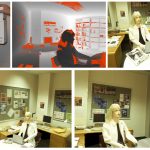
Type: [Talks (Sketches)]
Acquisition of large-scale surface light fields Presenter(s): [Chen] [Nyland] [Lastra] [Fuchs]
[SIGGRAPH 2003]
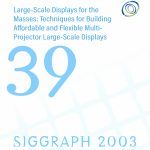
Type: [Courses]
Large-Scale Displays for the Masses: Techniques for Building Affordable and Flexible Multi-Projector Large-Scale Displays Organizer(s): [Majumder] [Brown]
Presenter(s): [Majumder] [Brown] [Chen] [Fuchs] [Humphreys] [Stevens]
Entry No.: [39]
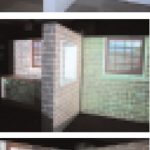
Type: [Talks (Sketches)]
Life-Sized Projector-Based Dioramas: Spatially Real and Visually Virtual Presenter(s): [Low] [Welch] [Lastra] [Fuchs]
[SIGGRAPH 2001]
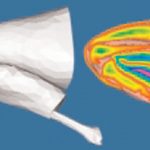
Type: [Talks (Sketches)]
Simulation of Deforming Elastic Solids in Contact Presenter(s): [Hirota] [Fong] [State] [Fuchs]
[SIGGRAPH 2001]

Type: [Panels]
Mixed Reality: Where Real and Virtual Worlds Meet Presenter(s): [Fuchs] [Kanade] [Klinker] [Milgram] [Tamura]
Entry No.: [16]
[SIGGRAPH 1999]
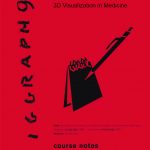
Type: [Courses]
3D Visualization in Medicine Organizer(s): [Yoo]
Presenter(s): [Yoo] [Fuchs] [Kikinis] [Lorensen] [State] [Vannier]
Entry No.: [23]
[SIGGRAPH 1998]
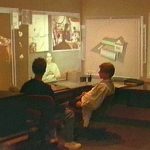
Type: [Technical Papers]
The office of the future: a unified approach to image-based modeling and spatially immersive displays Presenter(s): [Raskar] [Welch] [Cutts] [Lake] [Stesin] [Fuchs]
[SIGGRAPH 1998]

Type: [Courses]
Programming Virtual Worlds Organizer(s): [Lastra]
Presenter(s): [Lastra] [Ghee] [Fuchs] [Taylor] [Weber] [Pausch]
Entry No.: [29]
[SIGGRAPH 1997]
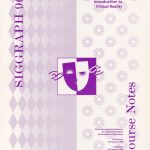
Type: [Courses]
Introduction to Virtual Reality Organizer(s): [Lastra] [Fuchs]
Presenter(s): [Lastra] [Fuchs] [Gelband] [Ghee] [Pausch] [Weber]
Entry No.: [14]
[SIGGRAPH 1996]
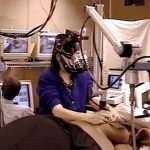
Type: [Technical Papers]
Technologies for augmented reality systems: realizing ultrasound-guided needle biopsies Presenter(s): [State] [Livingston] [Garrett] [Hirota] [Whitton] [Pisano] [Fuchs]
[SIGGRAPH 1996]

Type: [Courses]
Programming Virtual Worlds Organizer(s): [Lastra]
Presenter(s): [Lastra] [Fuchs] [Ghee] [Mine] [Pausch] [Pimentel]
Entry No.: [08]
[SIGGRAPH 1995]

Type: [Courses]
3D Visualization of Medical Data Organizer(s): [Ney]
Presenter(s): [Ney] [Fishman] [Fuchs] [Hanrahan] [Kikinis] [Lorensen] [Meinzer] [Yoo]
Entry No.: [24]
[SIGGRAPH 1994]
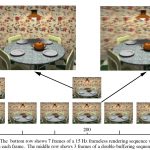
Type: [Technical Papers]
Frameless rendering: double buffering considered harmful Presenter(s): [Bishop] [Fuchs] [McMillan] [Zagier]
[SIGGRAPH 1994]

Type: [Courses]
Programming Virtual Worlds Organizer(s): [Lastra] [Fuchs]
Presenter(s): [Fuchs] [Lastra] [Ghee] [Mine] [Naughton-Green] [Pausch]
Entry No.: [17]
[SIGGRAPH 1994]

Type: [Courses]
Three dimensional Visualization Using Medical Data Organizer(s): [Fuchs] [Yoo]
Presenter(s): [Yoo] [Fuchs] [Fishman] [Ney] [Hanrahan] [Kikinis] [Lorensen]
Entry No.: [21]
[SIGGRAPH 1993]
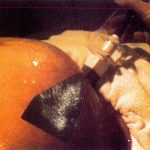
Type: [Technical Papers]
Merging virtual objects with the real world: seeing ultrasound imagery within the patient Presenter(s): [Bajura] [Fuchs] [Ohbuchi]
[SIGGRAPH 1992]
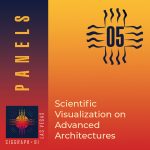
Type: [Panels]
Scientific Visualization on Advanced Architectures Presenter(s): [DeFanti] [Fuchs] [Fowler] [Tucker]
Entry No.: [05]
[SIGGRAPH 1991]
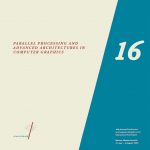
Type: [Courses]
Parallel Processing and Advanced Architectures in Computer Graphics Organizer(s): [Whitman]
Presenter(s): [Whitman] [Crow] [Fuchs] [Gharachorloo]
Entry No.: [16]
[SIGGRAPH 1989]
Type: []
Pixel-planes 5: a heterogeneous multiprocessor graphics system using processor-enhanced memories Presenter(s): [Fuchs] [Poulton] [Eyles] [Greer] [Goldfeather] [Ellsworth] [Molnar] [Turk] [Tebbs] [Israel]
[SIGGRAPH 1989]
Type: [Technical Papers]
Pixel-Planes 5: A Heterogeneous Multiprocessor Graphics System Using Processor-Enhanced Memories Presenter(s): [Fuchs] [Poulton] [Eytes] [Greer] [Goldfeather] [Ellsworth] [Motnar] [Turk] [Tebbs] [Israel]
[SIGGRAPH 1989]
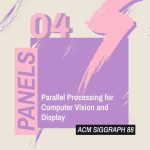
Type: [Panels]
Parallel Processing For Computer Vision And Display Presenter(s): [Dew] [Fuchs] [Kunii] [Wozny]
Entry No.: [04]
[SIGGRAPH 1988]
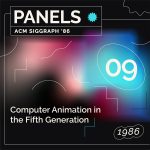
Type: [Panels]
Computer Animation in the Fifth Generation Presenter(s): [Badler] [Demos] [Fuchs] [Kay]
Entry No.: [09]
[SIGGRAPH 1986]
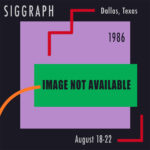
Type: [Technical Papers]
Fast constructive-solid geometry display in the pixel-powers graphics system Presenter(s): [Goldfeather] [Hultquist] [Fuchs]
[SIGGRAPH 1986]
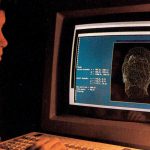
Type: [Technical Papers]
Image rendering by adaptive refinement Presenter(s): [Bergman] [Fuchs] [Grant] [Spach]
[SIGGRAPH 1986]
Type: [Technical Papers]
Fast spheres, shadows, textures, transparencies, and imgage enhancements in pixel-planes Presenter(s): [Fuchs] [Goldfeather] [Hultquist] [Spach] [Austin] [Brooks] [Eyles] [Poulton]
[SIGGRAPH 1985]
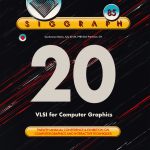
Type: [Courses]
VLSI for Computer Graphics Organizer(s): [Fuchs]
Presenter(s): [Clark] [Fuchs] [Guttag] [Kedem] [Schumacker]
Entry No.: [20]
[SIGGRAPH 1985]
Type: [Panels]
Trends in Semiconductor Hardware for Graphics Systems Presenter(s): [Atwood] [Bruce] [Clark] [Guttag] [Fuchs] [Sun]
Entry No.: [06]
[SIGGRAPH 1984]

Type: [Courses]
VLSI and Computer Graphics Organizer(s): [Fuchs]
Presenter(s): [Clark] [Fuchs] [Ousterhout] [Schumacker] [Weste]
Entry No.: [22]
[SIGGRAPH 1984]
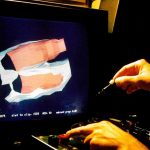
Type: [Technical Papers]
Near real-time shaded display of rigid objects Presenter(s): [Fuchs] [Abram] [Grant]
[SIGGRAPH 1983]

Type: [Courses]
Advanced Image Synthesis Organizer(s): [Whitted]
Presenter(s): [Fuchs] [Whitted] [Crow] [Max]
Entry No.: [10]
[SIGGRAPH 1982]

Type: [Panels]
Custom VLSI Chips for Graphics Presenter(s): [Clark] [Fuchs] [Whitted]
Entry No.: [01]
[SIGGRAPH 1981]
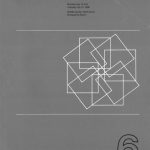
Type: [Courses]
Advanced (3D) Raster Graphics Organizer(s): [Whitted]
Presenter(s): [Crow] [Blinn] [Catmull] [Fuchs] [Clark] [Whitted] [Smith] [Williams]
Entry No.: [06]
[SIGGRAPH 1980]

Type: [Technical Papers]
On visible surface generation by a priori tree structures Presenter(s): [Fuchs] [Kedem] [Naylor]
[SIGGRAPH 1980]
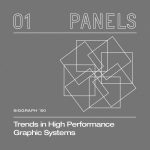
Type: [Panels]
Trends in high performance graphic systems Presenter(s): [Cohen] [Sproull] [Clark] [Parke] [Fuchs]
Entry No.: [01]
[SIGGRAPH 1980]
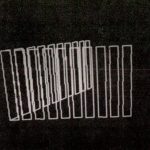
Type: [Technical Papers]
Generating smooth 2-D monocolor line drawings on video displays Presenter(s): [Barros] [Fuchs]
[SIGGRAPH 1979]
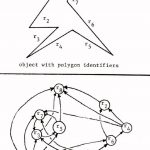
Type: [Technical Papers]
Predetermining visibility priority in 3-D scenes (Preliminary Report) Presenter(s): [Fuchs] [Kedem] [Naylor]
[SIGGRAPH 1979]
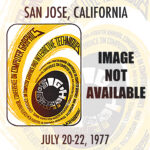
Type: [Technical Papers]
Optimal surface reconstruction from planar contours Presenter(s): [Fuchs] [Kedem] [Uselton]
[SIGGRAPH 1977]
Learning Category: Moderator:

Type: [Technical Papers]
VR @ 50: Celebrating Ivan Sutherland's 1968 Head-Mounted 3D Display System Entry No.: [04]
[SIGGRAPH 2018]
Role(s):
- Awardee
- Course Organizer
- Course Presenter
- Emerging Technologies Collaborator
- Emerging Technologies Presenter
- History Contributor
- Panel Moderator
- Panel Presenter
- Talk (Sketch) Presenter
- Technical Paper Presenter
- Technical Papers Jury Member




